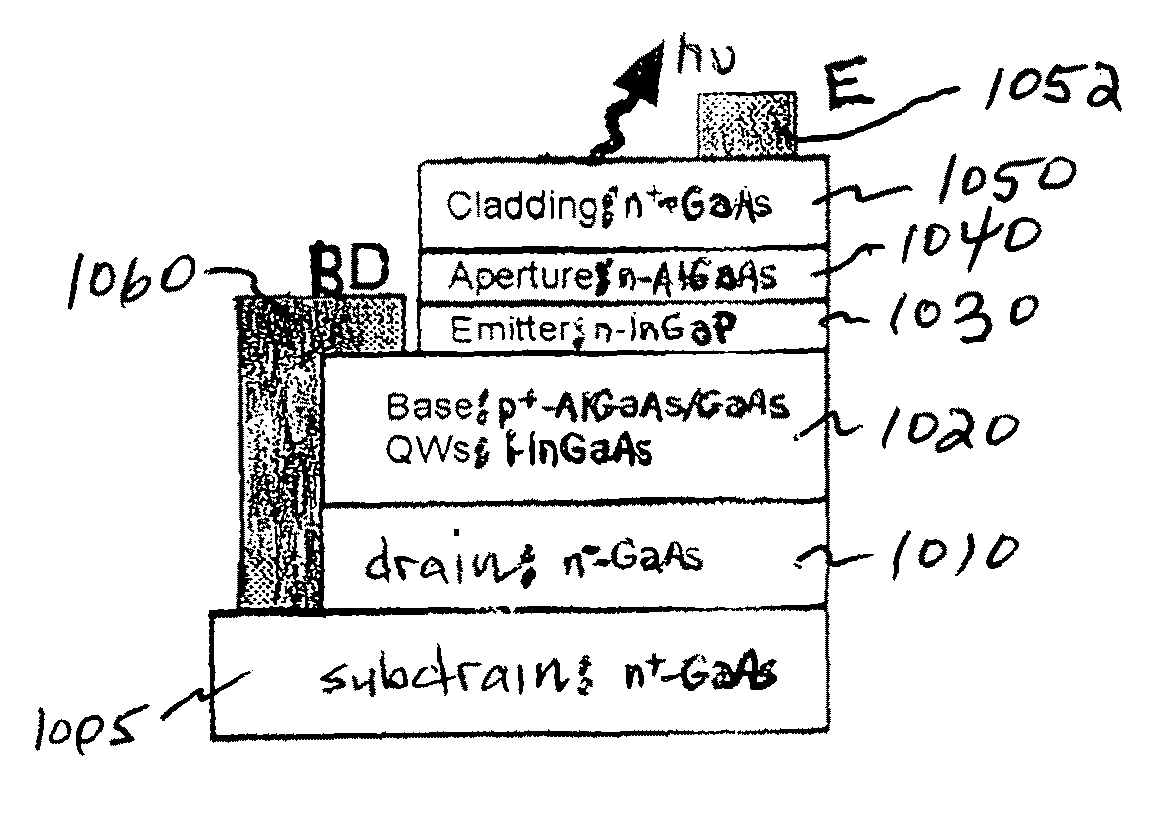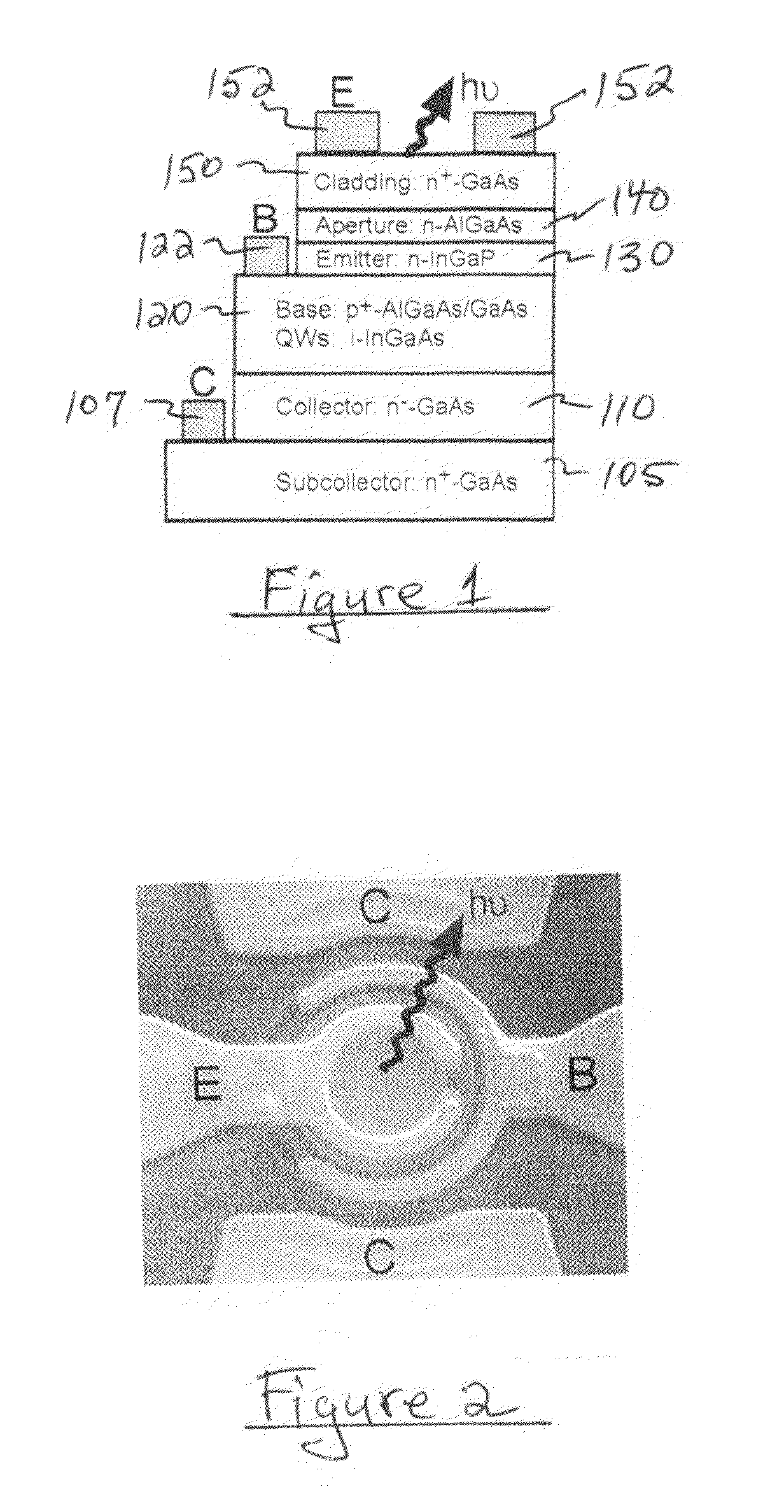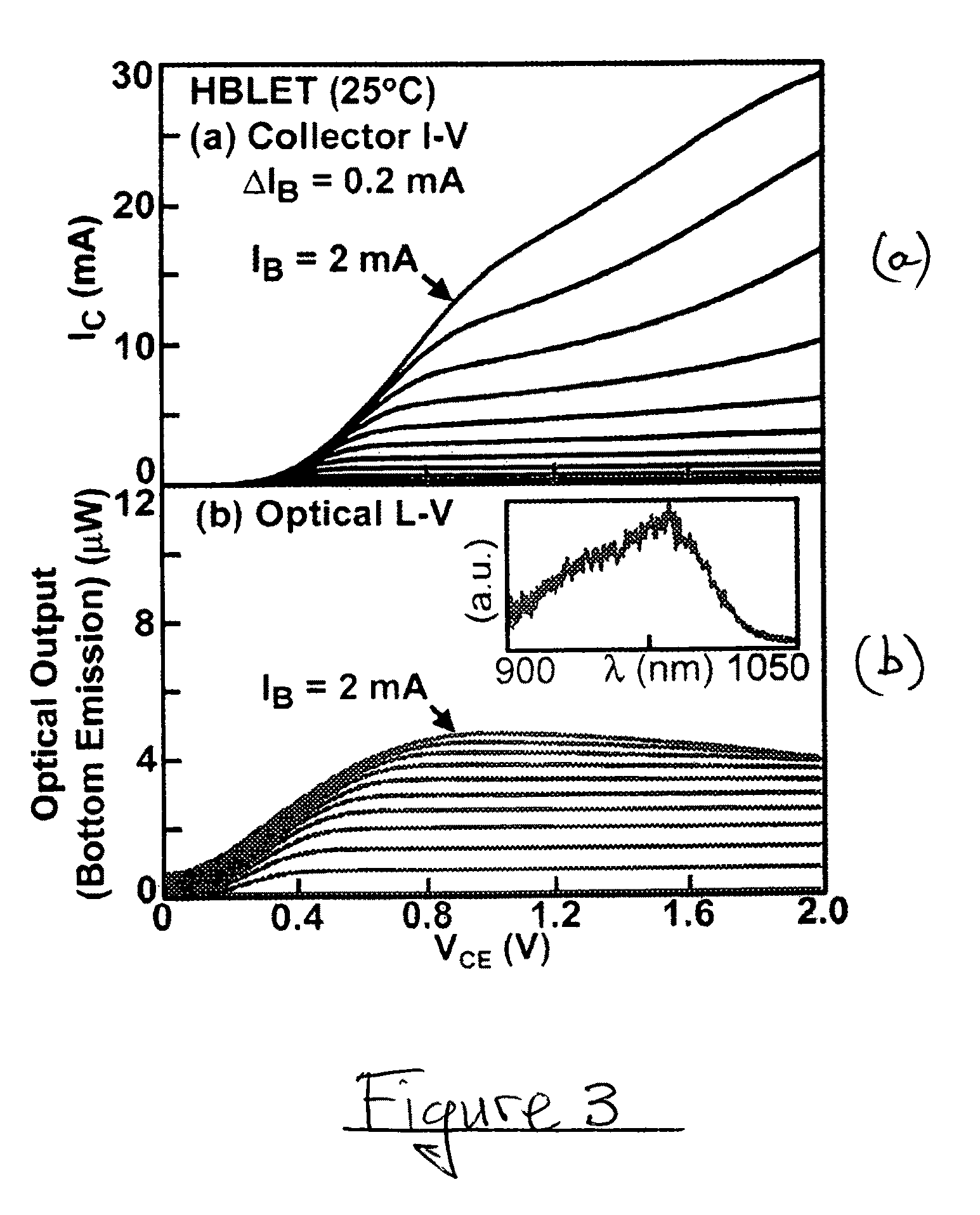High speed light emitting semiconductor methods and devices
a semiconductor and high-speed technology, applied in the direction of semiconductor lasers, lasers, electric lighting sources, etc., can solve the problem of parasitic capacitance limitations in the microwave performance of an hblet, and achieve the effects of reducing lateral extrinsic “parasite-like” rc charging, fast recombination dynamics of intrinsic transistors, and improving both electrical and optical characteristics
- Summary
- Abstract
- Description
- Claims
- Application Information
AI Technical Summary
Benefits of technology
Problems solved by technology
Method used
Image
Examples
Embodiment Construction
[0026]For an example of an embodiment of the invention, the epitaxial layers of the crystals used for a heterojunction bipolar light emitting transistor (HBLET), fabricated using MOCVD, included a 3000 Å n-type heavily doped GaAs buffer layer, followed by a 500 Å n-type Al0.30Ga0.60As layer, a graded Al0.30Ga0.70As to Al0.90Ga0.10As oxide buffer layer, a 600 Å n-type Al0.98Ga0.02As oxidizable layer, and then a graded Al0.90Ga0.10As to Al0.30Ga0.70As oxide buffer layer that completes the bottom cladding layers. These layers are followed by a 557 Å n-type subcollector layer, a 120 Å In0.49Ga0.51P etch stop layer, a 2871 Å undoped GaAs collector layer, and a 1358 Å average p-doped 3×1019 cm−3 AlGaAs / GaAs graded base layer (the active layer), which includes two undoped 112 Å InGaAs quantum wells (designed for λ≈980 nm). The epitaxial HBTL structure is completed with the growth of the upper cladding layers, which include a 511 Å n-type In0.49Ga0.51P wide-gap emitter layer, a graded Al0.3...
PUM
 Login to View More
Login to View More Abstract
Description
Claims
Application Information
 Login to View More
Login to View More - R&D
- Intellectual Property
- Life Sciences
- Materials
- Tech Scout
- Unparalleled Data Quality
- Higher Quality Content
- 60% Fewer Hallucinations
Browse by: Latest US Patents, China's latest patents, Technical Efficacy Thesaurus, Application Domain, Technology Topic, Popular Technical Reports.
© 2025 PatSnap. All rights reserved.Legal|Privacy policy|Modern Slavery Act Transparency Statement|Sitemap|About US| Contact US: help@patsnap.com



